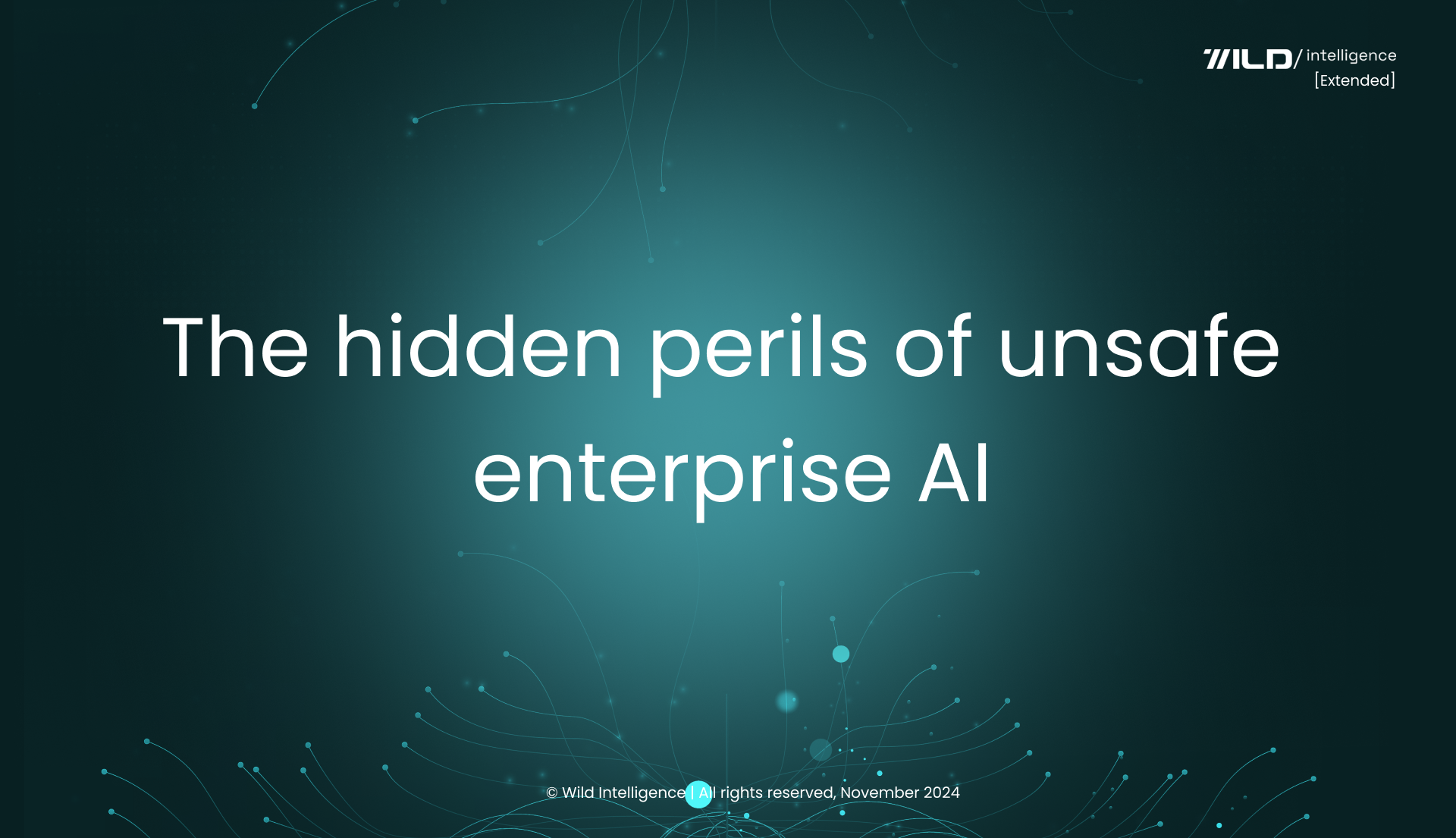The hidden perils of unsecured enterprise AI
Hello,
AI has emerged as a transformative force, empowering enterprises across industries to optimize operations, glean insights, and foster innovation.
However, the rapid integration of AI technologies often outpaces the establishment of robust security frameworks, exposing organizations to a gamut of hidden risks.
Unsafe AI systems can act as gateways for cyberattacks, resulting in data breaches, operational disruptions, financial loss, and reputational harm.
The threat landscape is extensive and continuously evolving, from data poisoning and adversarial attacks to model theft and unauthorized access.
For decision leaders, understanding these risks is paramount.
It's about safeguarding organizational assets and leveraging AI security as a catalyst for strategic growth. By building secure and resilient AI systems, businesses can:
Cultivate stakeholder trust:
Demonstrating a commitment to AI safety fosters confidence in your brand and services.Expand market reach:
Safe and secure AI can facilitate innovative solutions, creating opportunities for expansion into new sectors.Establish competitive differentiation:
Robust AI safety practices can set your organization apart and attract top talent.
The mounting costs and evolving landscape of AI Security: a call for enhanced safety measures
The year 2019 served as a stark reminder of the vulnerabilities inherent in enterprise AI systems.
A leading European energy firm suffered a significant data breach due to weaknesses in its AI-powered predictive maintenance system, resulting in the loss of sensitive customer data and intellectual property.
This incident not only caused substantial financial repercussions but also inflicted irreparable damage to the company's reputation.
This high-profile breach underscores the urgent need for robust AI security measures.
However, while security is paramount, AI safety is merely one facet of a broader imperative.
AI safety encompasses broader concerns, including preventing unintended consequences, mitigating biases, and assuring ethical and responsible AI development and deployment.
IBM Security's research reveals that the average cost of an AI-related data breach is a staggering $4.24 million, exceeding the average cost of data breaches.
This emphasizes the financial implications of neglecting AI security, which can lead to significant organizational losses.
Recognizing the gravity of these risks, tech giants like Google, Microsoft, and IBM are investing substantially in AI security research and development.
These industry leaders understand that safeguarding AI systems is not merely an operational necessity but a strategic imperative for maintaining trust and ensuring long-term success.
Furthermore, the emergence of specialized AI security startups offering targeted solutions to address specific vulnerabilities highlights the growing recognition of this burgeoning market.
These startups are developing innovative technologies to help organizations proactively identify and mitigate risks, reflecting a growing focus on building more secure and resilient AI systems.
As AI adoption accelerates across industries, the potential attack surface expands.
Gartner's prediction that 30% of cyberattacks will leverage AI-powered systems by 2025 is a stark reminder of the evolving threat landscape.
Attackers are becoming increasingly sophisticated, employing tactics like training data poisoning, AI model theft, and adversarial samples to exploit AI's inherent vulnerabilities.
The convergence of these trends underscores the critical need for decision-makers to prioritize both AI security and AI safety.
By investing in robust security frameworks, promoting ethical AI development practices, and cultivating a culture of AI safety, organizations can protect themselves from costly breaches and ensure the responsible and beneficial use of AI in an increasingly AI-driven world.
Conclusion: navigating the future of AI safety
Emerging trends:
As AI systems become more sophisticated and integrated into critical business processes, the potential for unintended consequences and misuse will escalate. Ensuring AI safety requires a comprehensive approach that addresses cybersecurity threats, the ethical implications, and the potential societal impact of AI.
Strategic recommendations:
Incorporate safety by design:
Integrate safety considerations into the earliest stages of AI system design and development. This includes conducting thorough risk assessments, incorporating ethical guidelines, and prioritizing transparency and explainability in AI algorithms.Implement robust access controls and data protection:
Safeguard sensitive data and AI models from unauthorized access and manipulation. This involves implementing stringent access controls, encryption techniques, and data anonymization methods to protect privacy and prevent misuse.Establish continuous monitoring and auditing for bias and unintended outcomes:
Monitor and audit AI systems for potential biases, unintended consequences, and safety risks. This includes establishing feedback loops, conducting regular audits, and implementing human oversight and intervention mechanisms.Invest in AI safety training and awareness:
Cultivate a safety-conscious workforce by providing comprehensive training and education on AI safety principles, ethical considerations, and best practices.Collaborate with AI safety experts:
Leverage external expertise to assess and fortify your AI safety posture. This includes collaborating with researchers, ethicists, and other stakeholders to stay abreast of the latest developments in AI safety and ensure responsible AI development and deployment.
The potential risks associated with AI are significant. Still, they can be effectively mitigated through proactive measures and a commitment to AI safety.
By addressing these risks and prioritizing safety considerations, decision leaders can fortify their organizations, capitalize on strategic opportunities, and shape a future where AI drives responsible innovation and sustainable growth.


